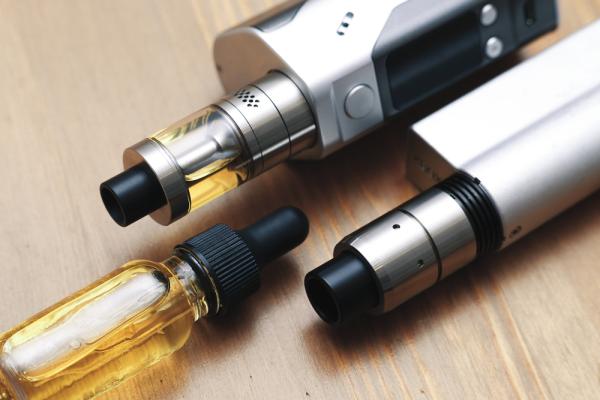
It is well documented that cigarette smoke causes lung cancer, but giving up nicotine still proves to be the most challenging part of quitting cigarettes.
Of all the available smoking cessation aides, electronic cigarettes (e-cigarettes) have gained the most popularity - likely because they are designed to simulate the cigarette-smoking experience. E-cigarettes are battery operated wands that contain liquid nicotine, which when heated, emit an aerosol that can be inhaled (vaped).
Due to the relatively short history of e-cigarettes, there are some unanswered questions about their long-term health safety. Studies up to this point have suggested that vaping is safer than smoking because it does not expose a person to the inhaled toxins found in cigarette smoke that can cause cancer. A recent study published in Mutation Research has furthered this thinking, showing that e-cigarettes do not cause mutation in DNA.
Analyzing the ability of a compound to cause mutation is important because of the direct link between mutation and cancer. To simplify what is an incredibly complicated process, the more mutations that something creates (the more mutagenic it is) the more likely it is to cause cancer. Fewer mutations = less cancer.
The researchers used the Ames test developed by Bruce Ames in the 1970s. This assay has been described by our own Dr. Julianna LeMieux and can be read about here.
This study exposed bacteria to cigarette chemicals and checked for mutagenic activity. The study in question was done on two strains of Salmonella (TA98 and TA100) known to be 93% sensitive (when used together) in detecting mutagenic particles. The agar plates containing TA98 and TA100 were exposed to the following:
- Aerosol collected matter (ACM) extracted from the e-cigarettes
- Total particulate matter (TPM) extracted from cigarette smoke
- Direct cigarette smoke
- Direct aerosol from E-cigarette
Controls: Controls for the particulate test were exposed to Benzo[a]pyrene, 2-aminoanthracene (chemicals linked to cancer), whereas air exposure (no link to cancer) was used as control for the aerosol test.
After exposure, the agar plates containing the bacteria were assessed for 1) mutagenic activity, which was determined by increase in number of bacteria 2) Toxicity, which was determined by decrease in the number of the bacteria i.e. thinning of the bacterial lawn. The results were as follows:
Exposure to particles of smoke or aerosol
- As expected, exposure to particles from cigarette smoke (TPM) resulted in dose dependent mutation after only 24 minutes of exposure. Toxicity occurred when exposure reached the highest dose (2400ug/plate).
- Exposure to E-cigarette particulate (ACM) did not result in mutagenic activity i.e.“no increases above the 2-fold threshold”. Active controls reached a 5 to 6-fold increase. No toxicity was seen at any dose.
Direct exposure to smoke or aerosol
- Direct exposure to cigarette smoke for 24 minutes caused a mutagenic response at the lowest smoke dilution of 1 L/min in the presence of metabolic activation. “Both strains TA98 and TA100 showed signs of thinning of the background lawn, indicating toxicity had been reached”.
- Direct exposure to e-cig aerosol for up to 3 hours did not meet mutagenic threshold compared to air controls. No evidence of toxicity was seen at any metabolic state. Dose dependent toxicity was also not seen.
All results were reproducible on duplicate experiments.
The findings of this study should be encouraging to current e-cigarette users; however, the authors have pointed out a few caveats. The study was done on two bacterial strains, rather than the full battery of five strains recommended by regulatory guidelines. Using the complete panel may have increased sensitivity to mutagenic activity.
What type of studies are needed in the future? The authors recommend future studies on bacteria that offer special sensitivity such as TA104 known to detect carbonyl-based byproducts of dry wicking- a "condition where the wick dries and overheats in the absence of e-liquid"). More studies are also needed on longer exposure periods and higher concentrations of e-cigarette particles. Lastly, since the study was done on a single model of e-cigarettes (Vype ePen), future testing on different device models may offer additional insight.



